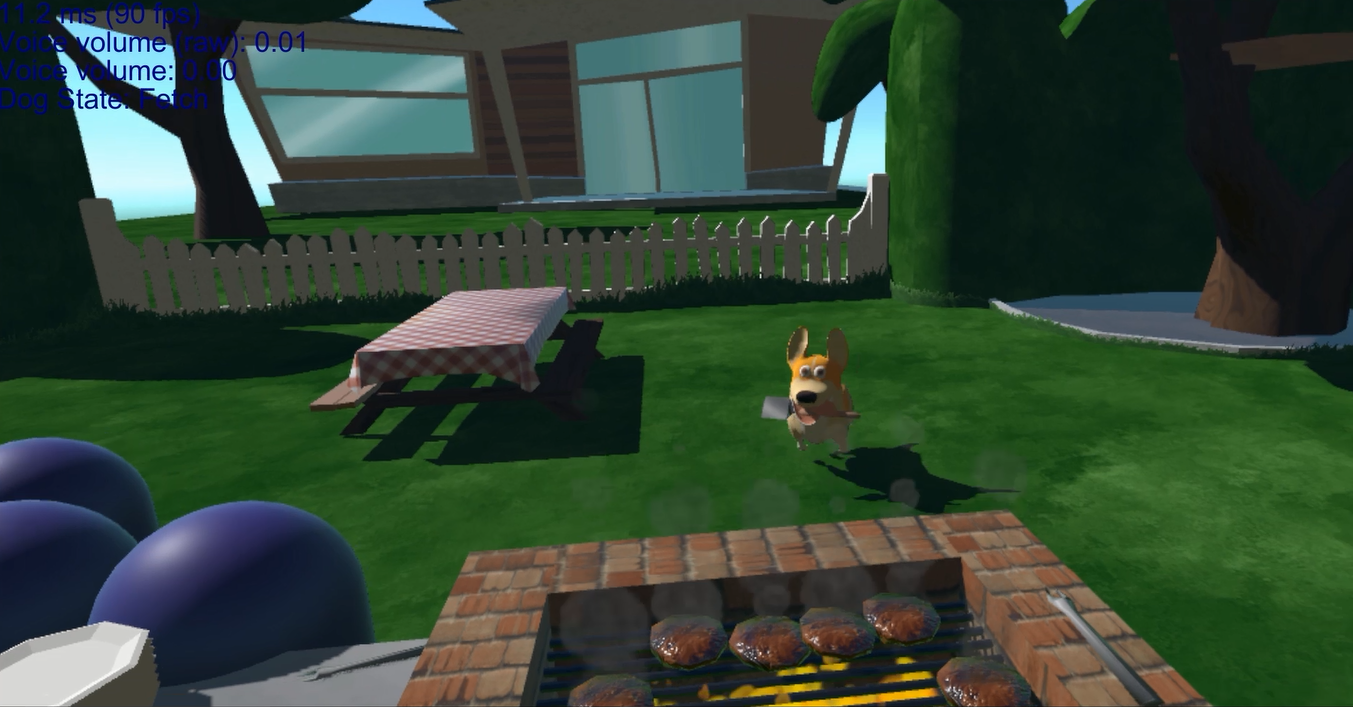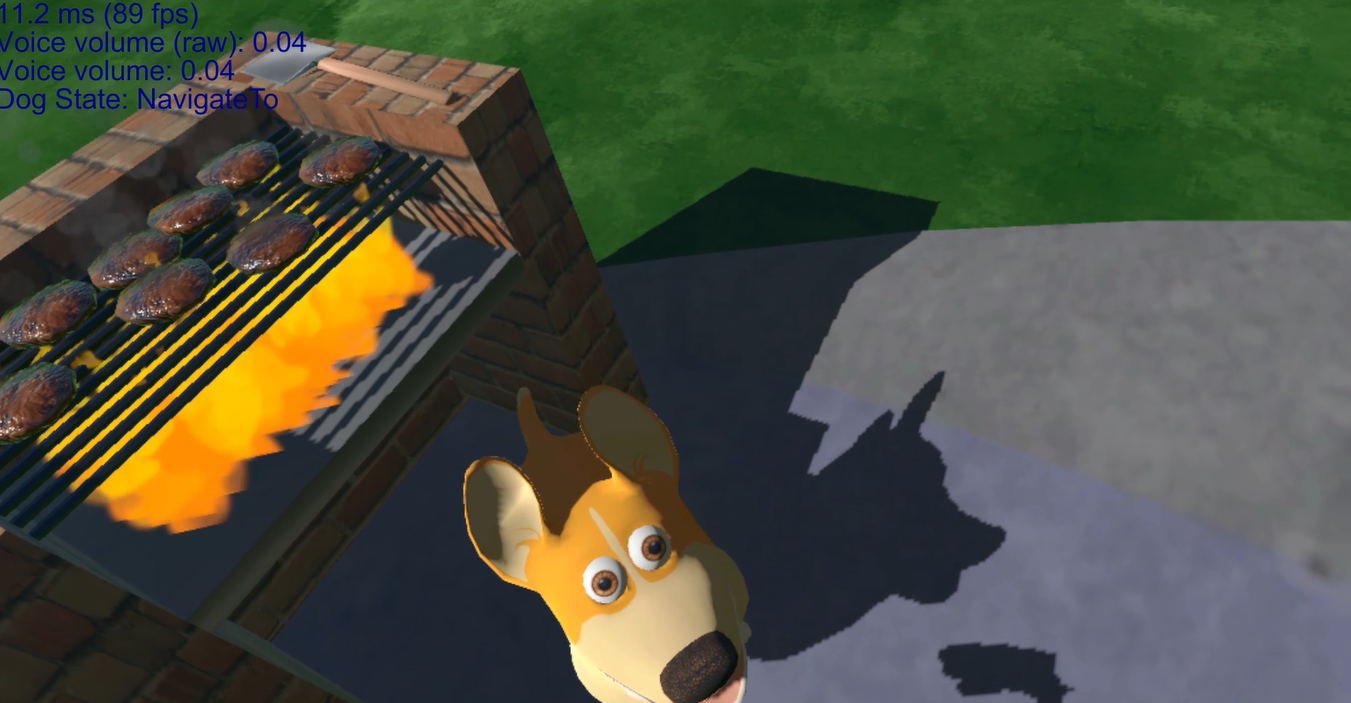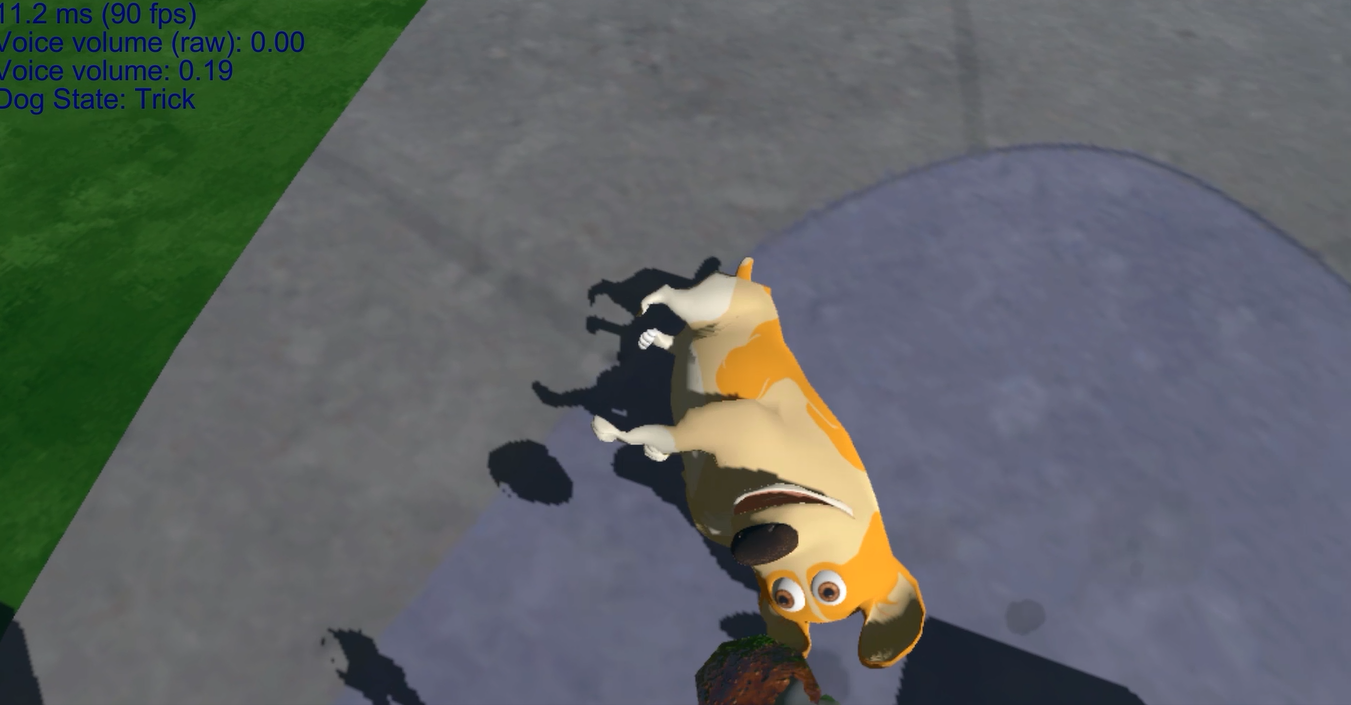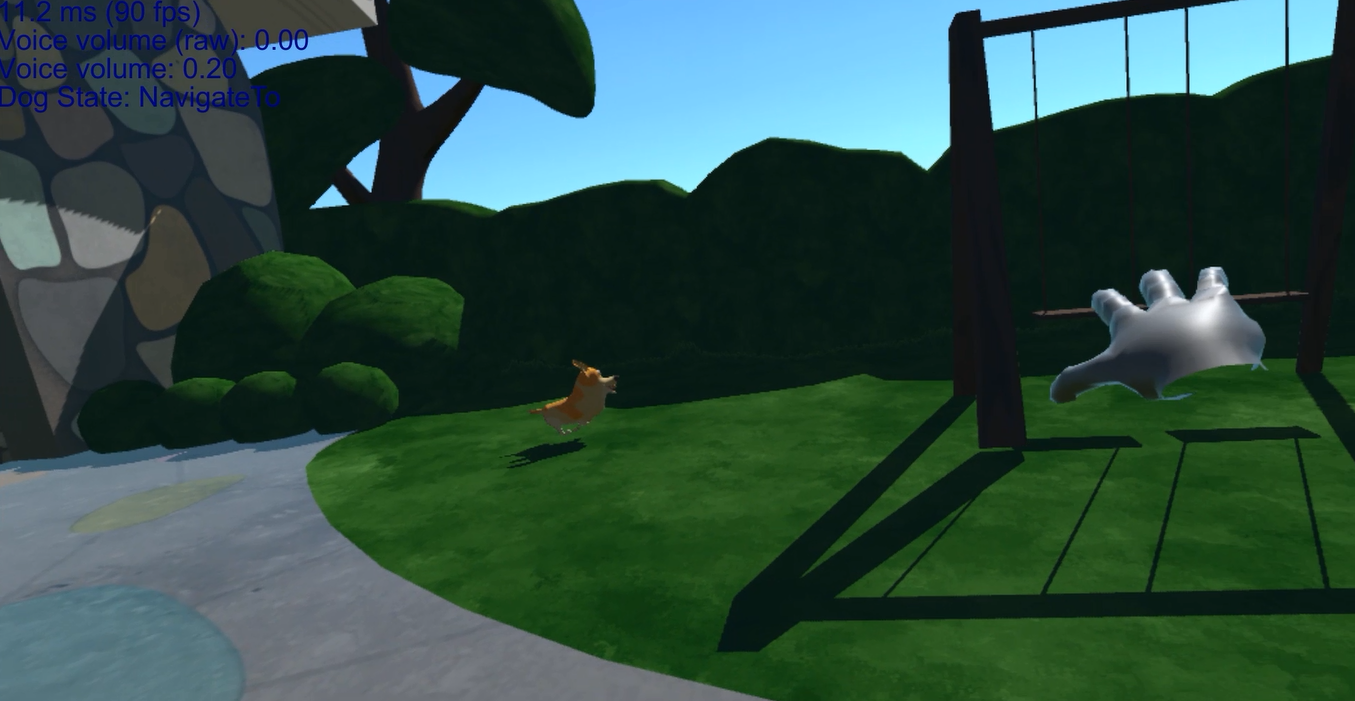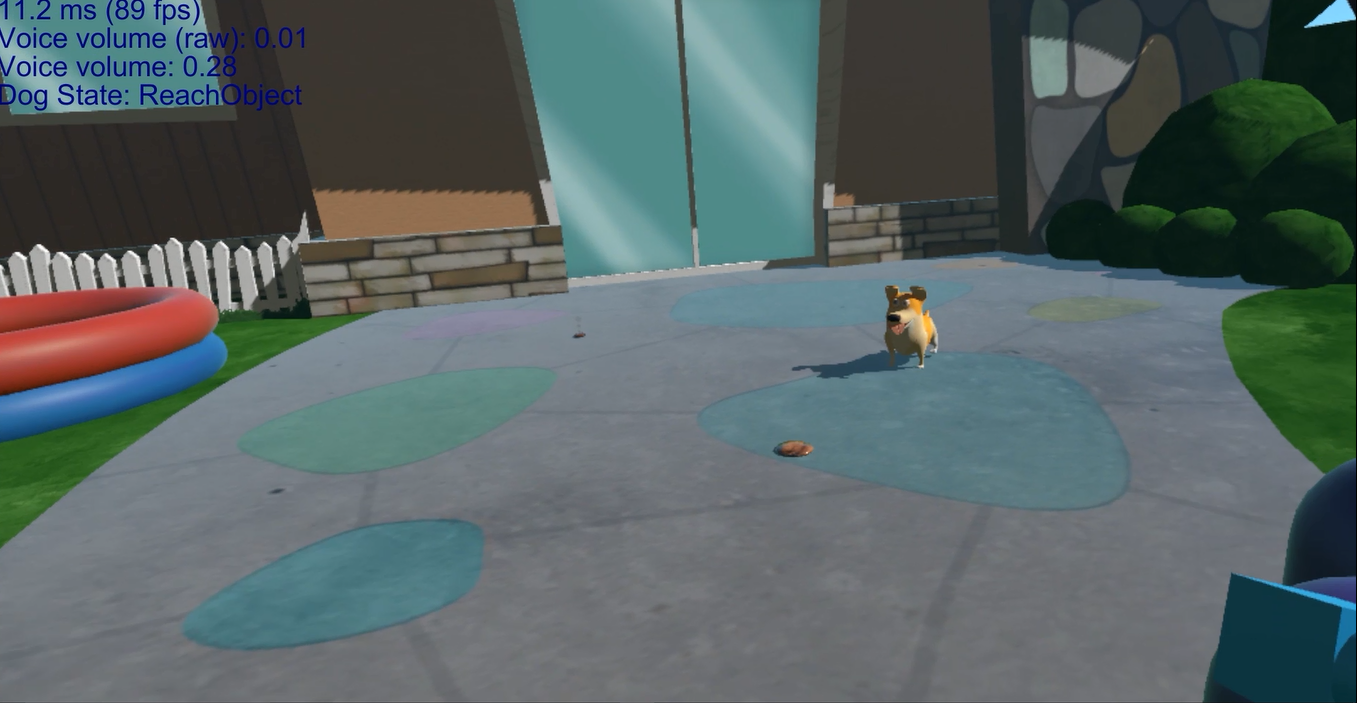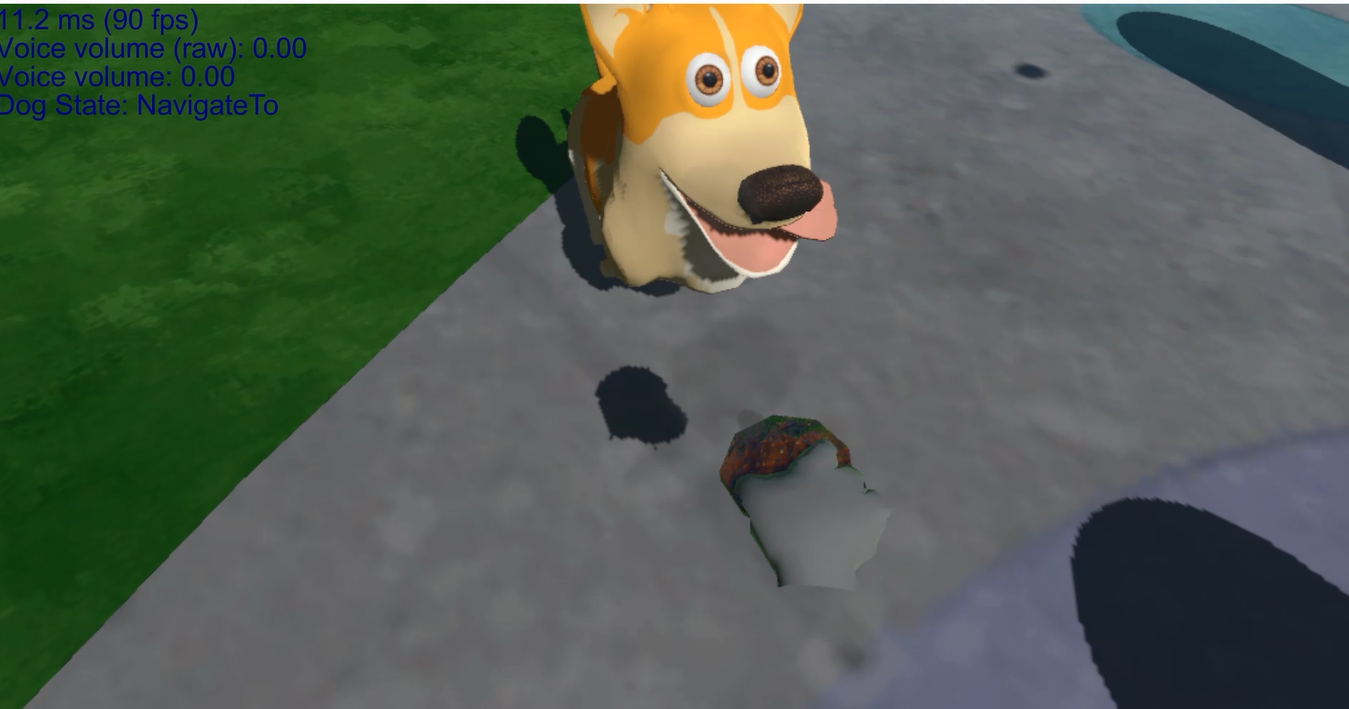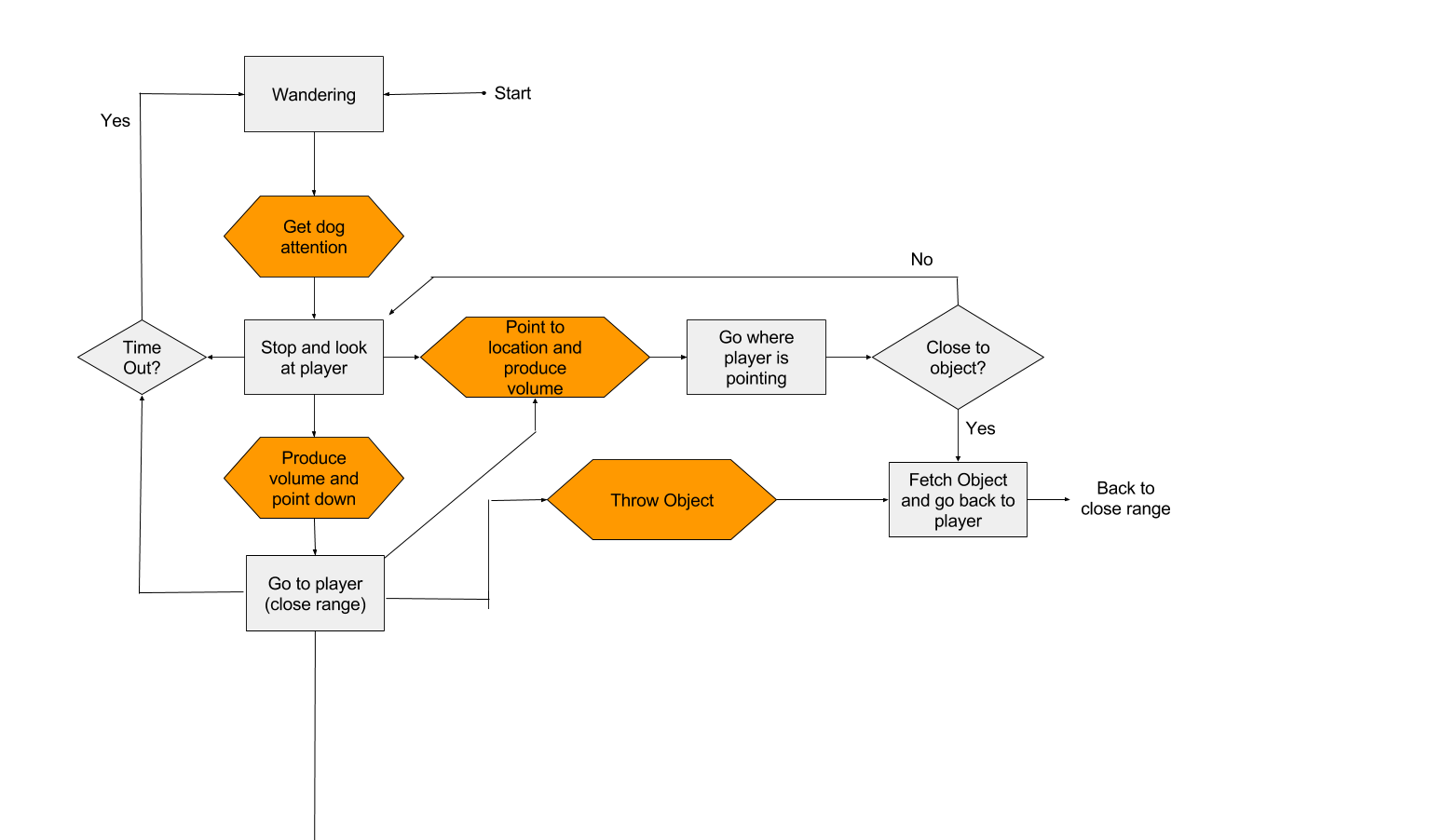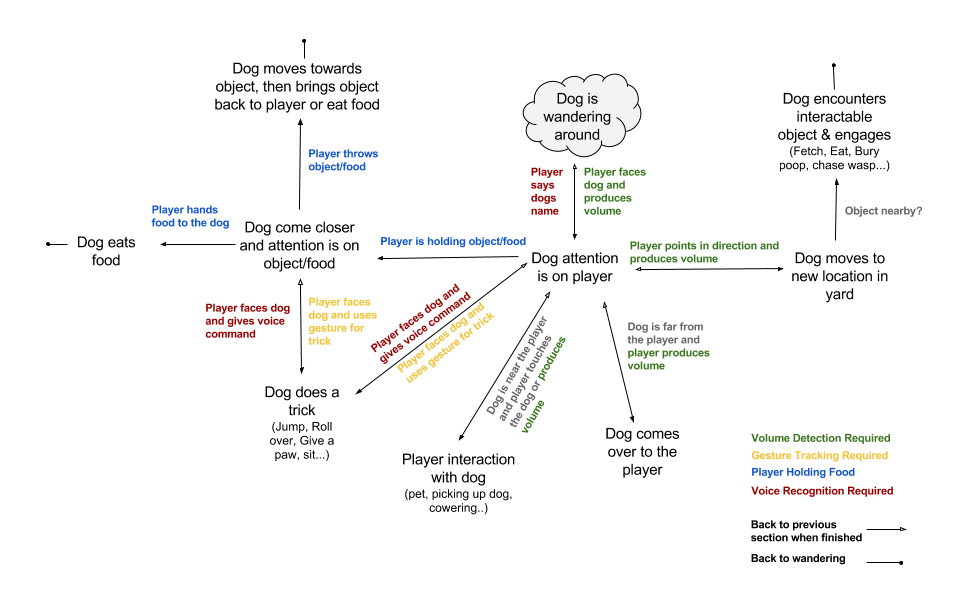VR VIRTUAL DOG
The VR dog is a project with a real client that wanted to include a dog in a game that will be released on steam VR. So our team was tasked with designing and developing the behavior and the art of that character.
The project is a lot focused on finding optimal interactions in VR since we tried many "out of the box" ways doing the player-dog interactions, to make the dog believable and the experience enjoyable.
The dog acts as the player's leg. Since in VR the players moving area is very limited, the dog is very handy to retrieve inaccessible objects of the scene. But the player will have to ask the dog for them! The dog will react to objects in range and to the gestures and voice of the player, following a list of priorities. For example, food is usually the priority #1 of the dog. If there is food around, nothing else matter! If the player is holding food, the dog will listen carefully to all the tricks the player is telling. The dog can execute many tricks and also has its own "idle behavior" when the player is not taking care of it.
Team members
Weeks of work
happy dog!

